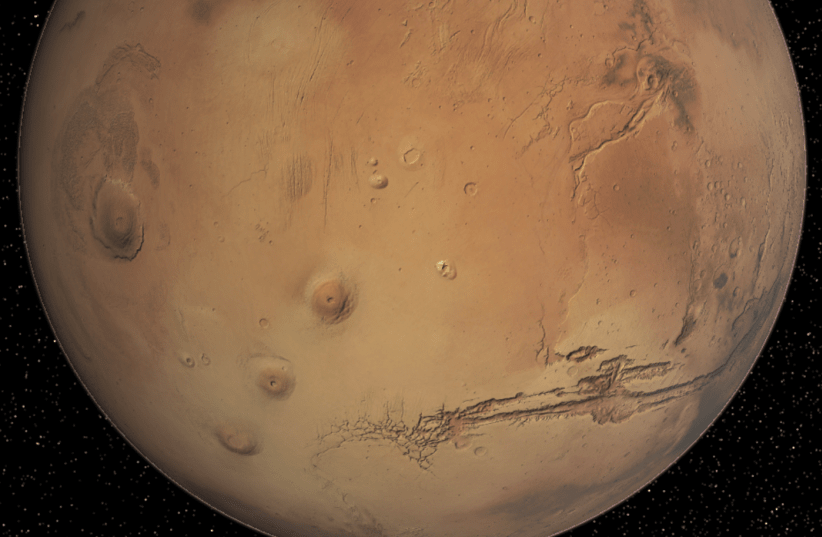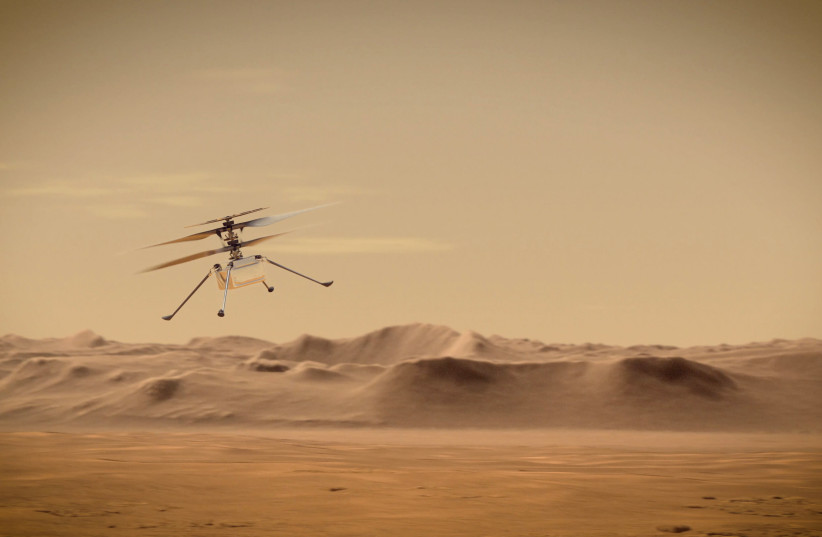There may have once been water on Mars, even if only for a very short time, a new scientific study revealed, adding a new layer to the question of whether there was once life on Mars, and if the planet could be able to host life at all.
The study, published in the peer-reviewed academic journal Geology, was carried out with funding from the NASA Mars Data Analysis Program.
Finding water on Mars is something scientists have been trying to do for decades, as many have pondered over the possibility that life was once present on the red planet.
Previous studies of Earth's neighbor found no traces of water, just rock and sand. However, that hasn't stopped scientists from sending mission after mission to Mars.
The study in question took a look at a region of Mars known as Arabia Terra, a region slightly larger than Europe that is rife with canyons, craters and volcanic calderas. But most interesting for the sake of the research here were the light-toned sedimentary layers of rock throughout the area.
Scientists have long puzzled over these layers, especially in relation to the Martian climate.
This is because of a certain property of these rocks. The temperature of these rocks did not necessarily always match up with the surrounding materials. This is due to what is known as thermal inertia, the degree of slowness it takes for the temperature of an individual body or object to approach the temperature of its surroundings.
Why does this happen?
Normally, this would indicate induration, which is the process of soil and grain particles turning into rocks. This is what creates rock layers in general.
Rocks tend to lose heat much more slowly than looser particles, grains and sand during the night. Because of this, scientists can tell how hard and solid a rock is based on temperatures.
Many had thought that this property in the rocks indicated induration and, more importantly, the role water played in it. And that's why this area was chosen for study.
“We were specifically interested in using rocks on the surface of Mars to get a better understanding of past environments three to four billion years ago and whether there could have been climatic conditions that were suitable for life on the surface,” Northern Arizona University PhD candidate Ari Koeppel, the lead author of the study, said in a statement. “We were interested in whether there was stable water, how long there could have been stable water, what the atmosphere might have been like and what the temperature on the surface might have been like.”
The scientists did a comprehensive investigation of the thermal inertia of the area, specifically these sedimentary layers, with the use of remote sensing instruments on satellites - since physically going to Mars to do it is impossible.
If water had been there, it would have an effect on temperature, mineral cohesion and erosion.
Based on their data, the scientists concluded that the region very well may have had water, as the evidence suggested. But if water had been there, it would only have been there for a very short amount of time.
At first glance, the findings may be disappointing. After all, without water, there seems to be less of a chance of there having ever been life on Mars. But for Koeppel, these findings open the door to new questions about the red planet.
"What are the conditions that could have allowed there to be water there for a brief amount of time?" he said in a statement. "Could there have been glaciers that melted quickly with outbursts of huge floods? Could there have been a groundwater system that percolated up out of the ground for only a brief period of time only to sink back down?"
Mars is one of Earth's closest planetary neighbors, along with Venus. Unlike Venus, though, which is rendered inhospitable by an incredibly dense and volatile climate and atmosphere, Mars has often been seen as a prime candidate for eventual space colonization.
It is for this reason that so many rovers and probes have been sent to the red planet, and why scientists so often try to test the conditions of Mars to see if the planet could host life.
One of the most recent of these tests was AMADEE-20, a Mars analog mission carried out by the Austrian Space Forum (OeWF) in partnership with the Israel Space Agency (ISA) and the D-MARS habitat in Israel.
This test, which took place in the Ramon Crater in Mitzpe Ramon, saw analog astronauts living in a habitat designed to replicate the conditions of Mars.
But further studies will still be needed to understand the mysteries of the red planet.

